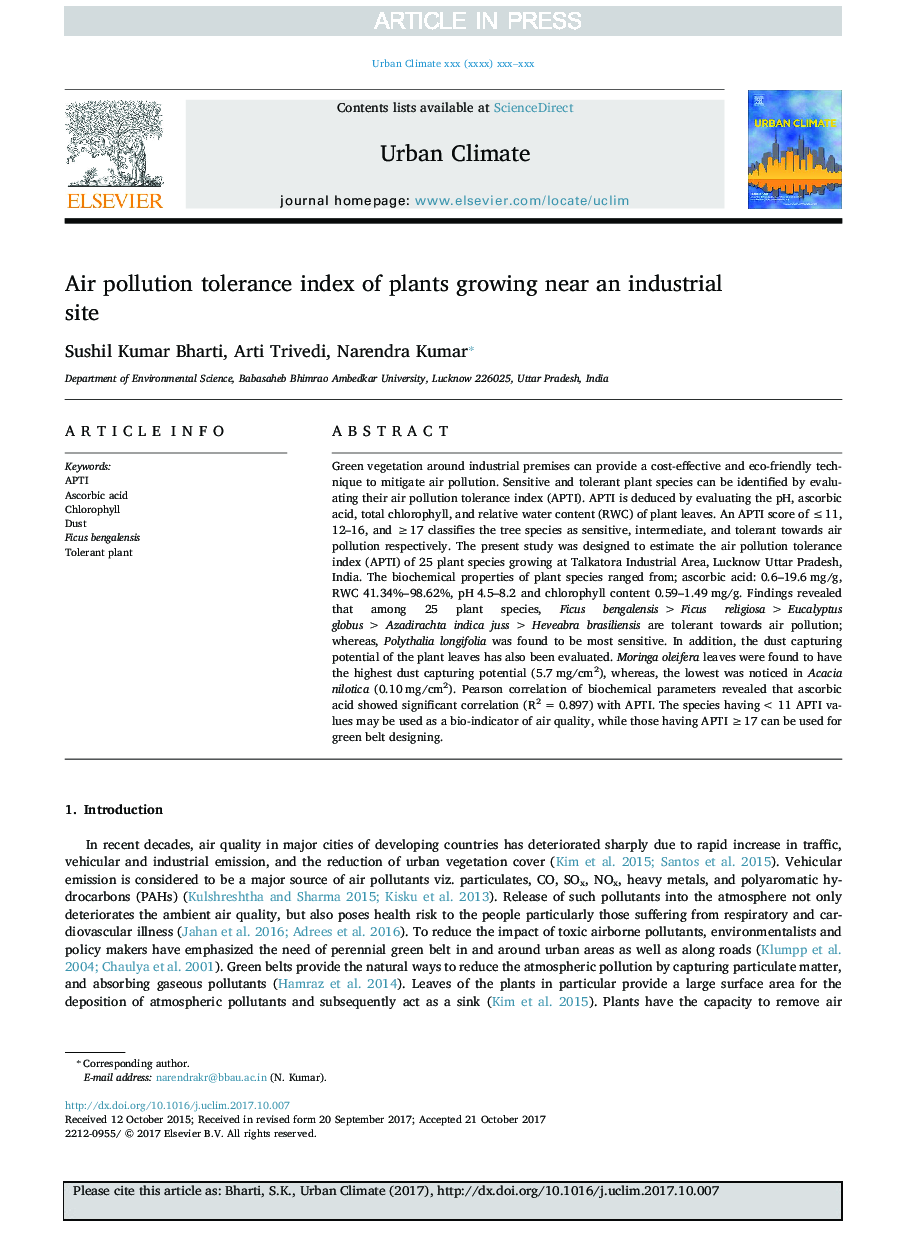| کد مقاله | کد نشریه | سال انتشار | مقاله انگلیسی | نسخه تمام متن |
|---|---|---|---|---|
| 6576923 | 1422839 | 2018 | 10 صفحه PDF | دانلود رایگان |
عنوان انگلیسی مقاله ISI
Air pollution tolerance index of plants growing near an industrial site
ترجمه فارسی عنوان
شاخص تحمل آلودگی هوا گیاهان نزدیک یک محل صنعتی
دانلود مقاله + سفارش ترجمه
دانلود مقاله ISI انگلیسی
رایگان برای ایرانیان
کلمات کلیدی
موضوعات مرتبط
مهندسی و علوم پایه
علوم زمین و سیارات
علوم زمین و سیاره ای (عمومی)
چکیده انگلیسی
Green vegetation around industrial premises can provide a cost-effective and eco-friendly technique to mitigate air pollution. Sensitive and tolerant plant species can be identified by evaluating their air pollution tolerance index (APTI). APTI is deduced by evaluating the pH, ascorbic acid, total chlorophyll, and relative water content (RWC) of plant leaves. An APTI score of â¤Â 11, 12-16, and â¥Â 17 classifies the tree species as sensitive, intermediate, and tolerant towards air pollution respectively. The present study was designed to estimate the air pollution tolerance index (APTI) of 25 plant species growing at Talkatora Industrial Area, Lucknow Uttar Pradesh, India. The biochemical properties of plant species ranged from; ascorbic acid: 0.6-19.6 mg/g, RWC 41.34%-98.62%, pH 4.5-8.2 and chlorophyll content 0.59-1.49 mg/g. Findings revealed that among 25 plant species, Ficus bengalensis > Ficus religiosa > Eucalyptus globus > Azadirachta indica juss > Heveabra brasiliensis are tolerant towards air pollution; whereas, Polythalia longifolia was found to be most sensitive. In addition, the dust capturing potential of the plant leaves has also been evaluated. Moringa oleifera leaves were found to have the highest dust capturing potential (5.7 mg/cm2), whereas, the lowest was noticed in Acacia nilotica (0.10 mg/cm2). Pearson correlation of biochemical parameters revealed that ascorbic acid showed significant correlation (R2 = 0.897) with APTI. The species having < 11 APTI values may be used as a bio-indicator of air quality, while those having APTI â¥Â 17 can be used for green belt designing.
ناشر
Database: Elsevier - ScienceDirect (ساینس دایرکت)
Journal: Urban Climate - Volume 24, June 2018, Pages 820-829
Journal: Urban Climate - Volume 24, June 2018, Pages 820-829
نویسندگان
Sushil Kumar Bharti, Arti Trivedi, Narendra Kumar,
